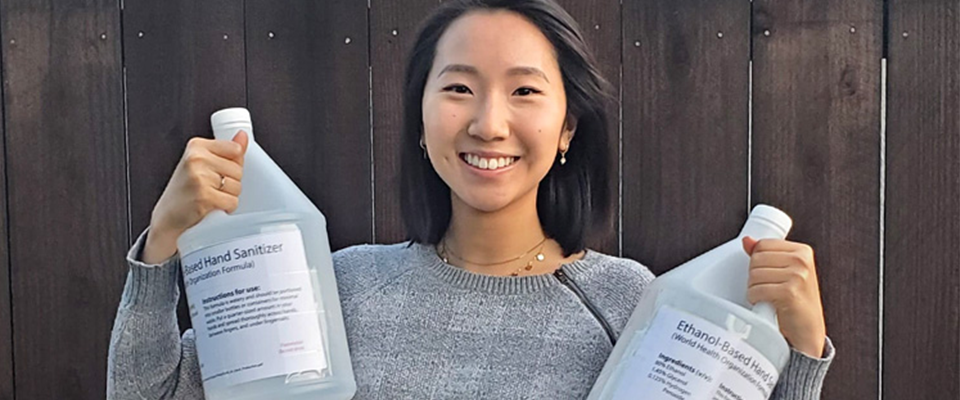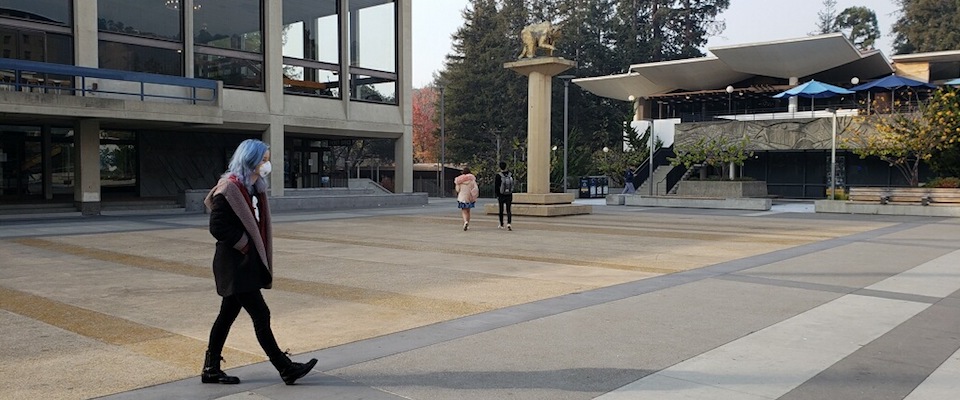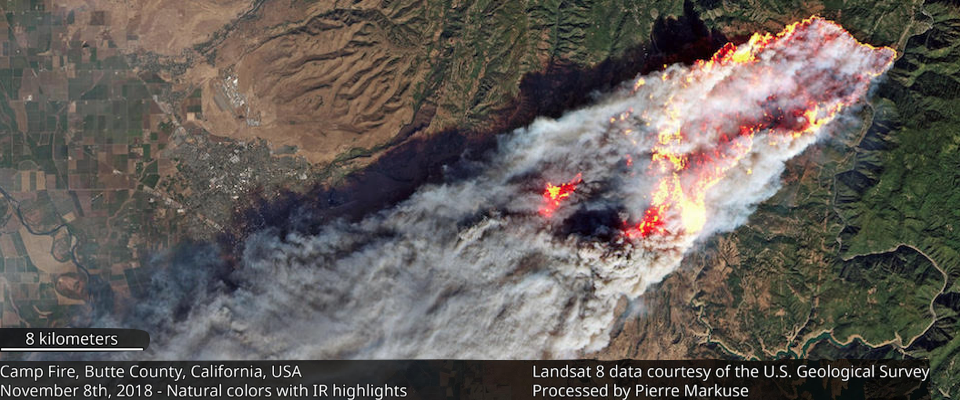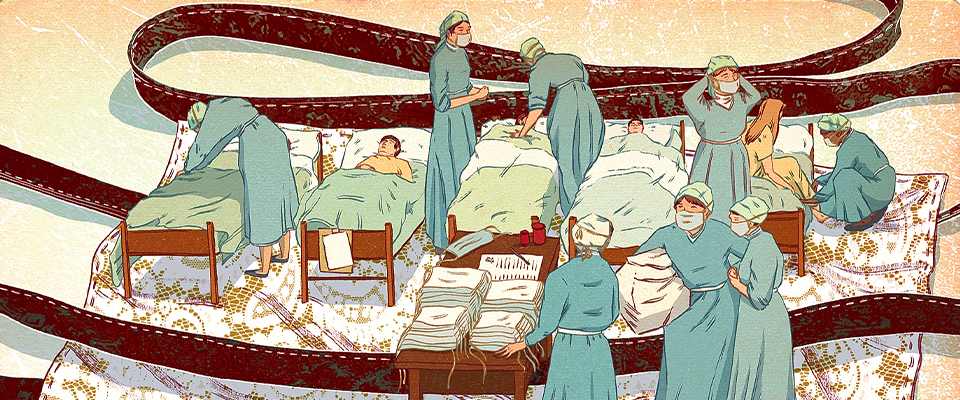Campus lab scientists respond to the demand for COVID-19 essentials.
Researchers Investigate How to Decontaminate Masks for Reuse
Before the COVID-19 pandemic, N95 respirators, the closely fitted masks used by medical personnel to filter airborne pathogens, were meant for one-time use only. Now, however, the N95 masks are in short supply and healthcare workers, desperate for adequate protective equipment, are scrambling to find ways to safely recycle their used masks.

In March, a group of more than 100 researchers nationwide formed N95DECON, a nonprofit to help provide the best scientific research and fill gaps where they exist. The consortium, which includes researchers from Berkeley, UCSF, Harvard, MIT, and elsewhere, focuses on three methods that disinfect exposed masks: heat and humidity, hydrogen peroxide vapor, and ultraviolet light.
Berkeley Professor Dr. Amy Herr has expertise in the latter. “When this crisis came up, we started thinking of how we can use our skills in ultraviolet light to help protect our healthcare heroes,” says Herr. She is careful to add that, “we’re not advising in any formal role … just trying to help connect people with scientific literature.” Among other things, Herr’s lab has helped define the minimum dosage of UV light needed to disrupt COVID-19’s genetic material, and is supporting the work of ultraviolet decontamination pioneer Dr. John Lowe at the University of Nebraska Medical Center. The center receives shipments of masks worn by health care workers, which are then hung on clotheslines in a room lit by an ultraviolet light tower. Once the tower works its magic, the masks are re-bagged and returned to their original owners. Similarly, Battelle, an Ohio nonprofit and research development firm, uses hydrogen peroxide vapor to clean thousands of secondhand masks for reuse.
In an interview with CalMatters in April, Herr stressed that such efforts are to address emergency shortages only. “I wouldn’t call them clean masks, I would call them maybe cleaner masks,” Herr said. “They’re not as good as new.”
Lab Scientists Respond to Hand Sanitizer Demand

While some Americans have made headlines for hoarding hand sanitizer, Berkeley doctoral student Abrar Abidi and research assistant Yvonne Hao have used a recipe published by the World Health Organization to turn alcohol into the sought-after substance. With the support of Professors Robert Tijan and Xavier Darzacq, the duo produces upwards of 120 gallons per week for volunteers to distribute to local communities. Much of their product ends up in homeless shelters, elder-care centers, and prisons, where, as Hao told Berkeley News, “self-isolation, self-quarantine and social distancing are not an option.” According to Abidi, “The staff at so many overcrowded, under-resourced shelters apparently receive it like a godsend. In the city, people have taken to calling it ‘liquid gold.’” He expects an augmented production of up to 300 gallons per week, as other campus labs follow in their footsteps. The effort isn’t expensive. As Abidi noted, “Some people on a weekend vacation end up spending more than it costs to run this entire operation for three weeks.”
From the Summer 2020 issue of California.





















